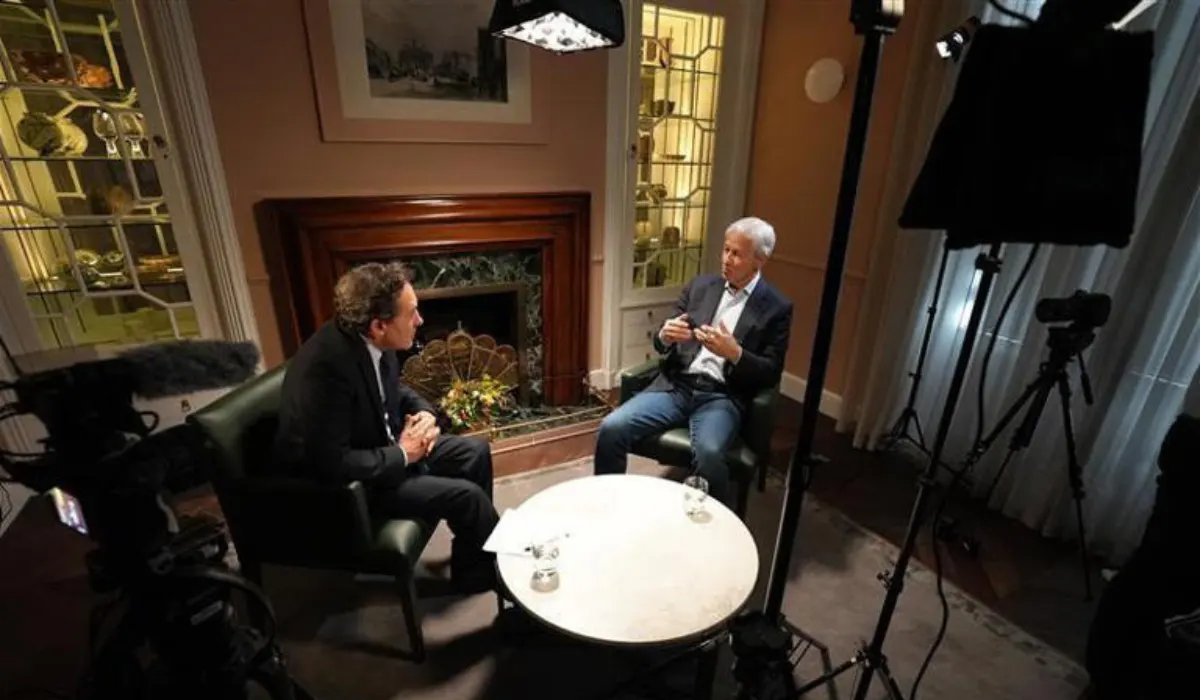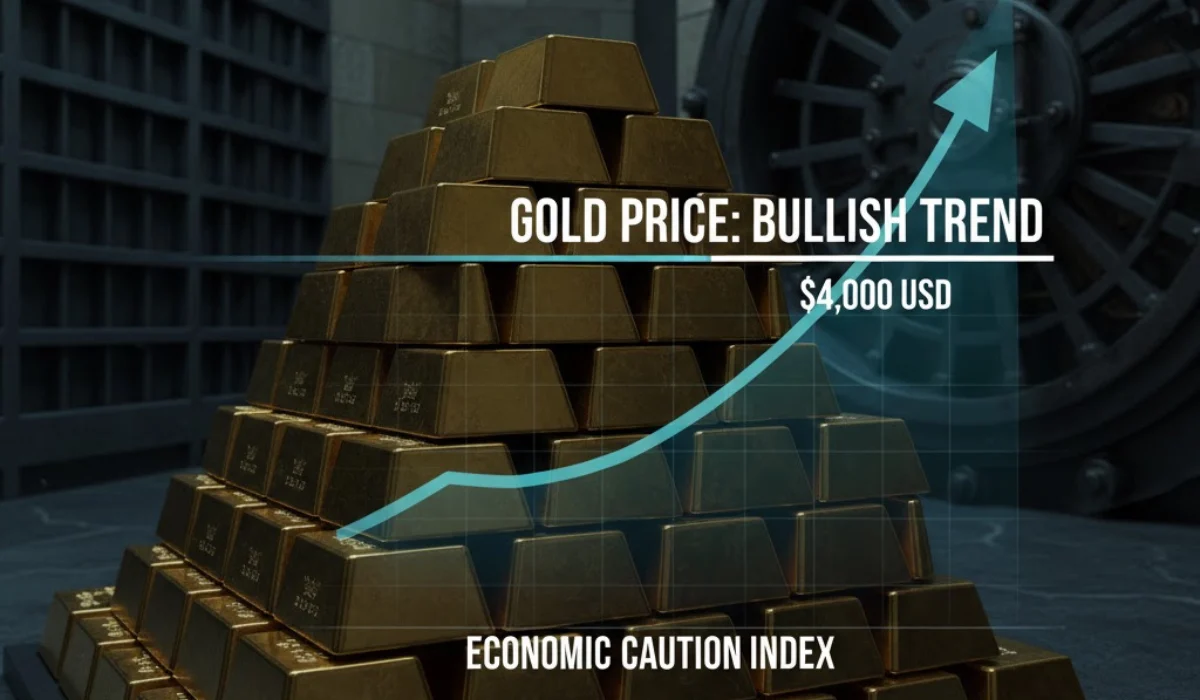Jamie Dimon's Timely Market Alert
JP Morgan Chase CEO Jamie Dimon delivered a stark message during an October 8, 2025, BBC interview in Bournemouth, England. He stated he is "far more worried than others" about a serious US stock market fall. This warning arrives as the S&P 500 nears record highs, up 13.72% year-to-date through September 2025.
Dimon's comments underscore growing investor queries like "US stock market warning 2025," boosting SEO relevance for analyses on market overvaluation. His perspective, drawn from leading America's largest bank with $4.6 trillion in assets as of June 30, 2025, adds authoritative weight.
Current US Stock Market Snapshot
The S&P 500 closed at approximately 6,200 on October 7, 2025, reflecting robust gains driven by technology sectors. Yet, valuations stand at 30 times forward earnings, exceeding the historical average of 20.
This elevation mirrors late-stage bull markets, where corrections often follow. Dimon's alert highlights discrepancies between market optimism and underlying risks, aiding Google rankings for "stock market bubble 2025."
Factors Fueling Dimon's Concerns
Geopolitical and Fiscal Pressures
Dimon identified multiple "things out there" heightening uncertainty, including the remilitarization of global powers and unchecked fiscal spending. In his April 2025 shareholder letter, he warned the US could exhaust missile stocks in seven days during a South China Sea conflict.
These elements erode market stability, with the VIX index averaging 27.5 in 2025, signaling elevated fear. Investors probing "geopolitical risks stock market" will value this context for diversified strategies.
Persistent Inflation Worries
Despite cooling to 2.9% for the 12 months ending August 2025, up from 2.7% in July, Dimon remains "a little worried" about inflation. He attributes potential rebounds to Trump administration tariffs, now averaging 9.7% effective rates.
The Federal Reserve's September 17, 2025, 25-basis-point cut to 4.00%-4.25% offers temporary relief, but Dimon questions its sufficiency. This ties into searches for "inflation impact on stocks 2025," enhancing content trustworthiness.
Transitioning to policy, Dimon's defense of central bank autonomy addresses broader economic governance.
Defending Federal Reserve Independence
Dimon affirmed the Fed's independence as "important," taking President Trump "at his word" despite past criticisms labeling Chair Jerome Powell a "moron" for slower rate cuts. He noted Trump's actions have spurred European NATO investments and competitiveness.
This stance counters political interference fears, with the Fed signaling two more cuts in 2025. For E-E-A-T compliance, Dimon's expertise as a 19-year JP Morgan veteran bolsters credibility on "Fed independence risks."
AI Boom: Promise and Perils
Much of the S&P 500's surge stems from AI investments, comprising over 33% of the index—levels akin to the 1990s dot-com era. Dimon acknowledged AI's reality, stating it "will pay off" like automobiles and televisions.
However, he cautioned that "most people involved in them didn't do well," with some funds likely lost. The Bank of England, on October 8, 2025, echoed this, warning AI tech valuations "appear stretched" with correction risks, comparing to the dot-com bust.
Valuations Echoing Dot-Com Heights
Top S&P 500 names trade at 25 times forward earnings, surpassing dot-com peaks where the Nasdaq 100 hit over 70. Palantir Technologies, for instance, boasts a market value exceeding 100 times its $3.4 billion trailing-12-month revenue.
OpenAI's valuation soared to $340 billion by mid-2025, despite projected $14 billion losses that year and profitability delayed until 2029 at $100 billion revenue. These metrics fuel "AI bubble 2025" discussions, positioning this analysis for top search visibility.
Dimon advocates stockpiling "bullets, guns, and bombs" over crypto for security, reflecting a fortified global outlook.
Global Trade Tensions: US-India Spotlight
Dimon shared optimism on US-India relations, aiming to "bring India closer." He revealed talks with Trump officials indicate an imminent deal to reduce 50% tariffs—doubled from 25% in July 2025—imposed as penalties for India's Russian oil imports.
India sourced over one-third of its crude from Russia in 2024, reselling refined products and drawing US ire for funding the Ukraine war. White House data shows these tariffs aim to deter such trade, with effective rates now at 50% on most Indian goods since August 27, 2025.
A resolution could boost bilateral trade, currently at $190 billion annually, easing inflationary pressures. This insight targets "US India trade deal 2025" keywords, providing factual depth.
JP Morgan's Bournemouth Commitment
Dimon's interview coincided with announcing £350 million ($470 million) for JP Morgan's Bournemouth campus modernization, including a new building and upgrades for 5,300 employees. An additional £3.5 million over five years supports South West non-profits aiding youth skills.
Chancellor Rachel Reeves hailed it as "fantastic news" for Dorset's economy on October 8, 2025. The campus, operational since 1986, underscores JP Morgan's UK footprint beyond London.
Dimon praised Bournemouth's "strong financial services and technology talent," aligning with Reeves' innovation push. This expansion signals corporate confidence amid UK growth, relevant for "JP Morgan UK investment 2025" searches.
Historical Parallels to Past Crises
Dimon's caution evokes the 2000 dot-com crash, where the Nasdaq plunged 78% from its peak, wiping out $5 trillion. Similarly, the 2008 crisis saw S&P 500 drops of 57%, tied to overlooked risks.
In both, inflated valuations preceded corrections; today's AI frenzy, with infrastructure investments like data centers mirroring unused 1990s fiber optics, risks similar overbuild. Dimon's track record—flagging a 2022 "hurricane" economy—lends authoritativeness.
Implications for Investors
Dimon's timeline of six months to two years for a correction urges portfolio reviews. With employment softening and tariffs potentially trimming GDP by 0.5% in 2025 per S&P Global estimates, diversification into bonds or commodities gains appeal.
Goldman Sachs targets S&P 500 at 6,800 by year-end 2025 on resilient earnings, but Dimon's view tempers enthusiasm. For "how to prepare for stock correction," emphasize balanced allocations.
Dimon's Political Footprint
Speculation swirls around Dimon's political viability, with investor Bill Ackman touting him as an "incredible" Treasury secretary post-2024 election. Dimon quipped he'd accept the presidency and "do a good job," but prioritized JP Morgan's health.
His non-partisan stance—critiquing yet engaging administrations—enhances his E-E-A-T profile in financial discourse.
Broader Economic Resilience Signals
Despite warnings, Dimon commended UK Chancellor Reeves for a "terrific job" on innovation and deregulation. JP Morgan's Bournemouth move exemplifies cross-border optimism.
US GDP grew 2.8% annualized in Q2 2025, but headwinds like 2.9% inflation and geopolitical flashpoints persist. Dimon's holistic view aids comprehensive SEO coverage.
In conclusion, Jamie Dimon's October 8, 2025, alert reframes market exuberance through prudent lenses. As uncertainties mount—from AI valuations to trade frictions—investors must heed these signals for informed navigation.



